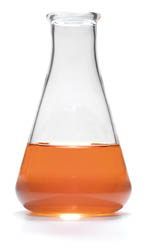
The relationship between sensory deterioration and oxidation of omega-3s is complex, due to their high degree of unsaturation. As a result, oxygen, heat, light, metals and enzymes all can increase the likelihood for oxidation.
“The food matrix can be conducive or detrimental to omega-3 oxidation,” says Srini Vasan, a principle scientist at Martek Biosciences Boulder Corp. (Boulder, Colo.). For example, yogurt is less susceptible to oxidation than extruded cereal. “The omega-3 in the yogurt matrix is protected by a protein film, and the physical gel-like structure further helps in stabilizing an emulsion that minimizes oxygen uptake,” says Vasan. Omega-3s are less vulnerable to oxidation since yogurt requires refrigerated storage, which means a lower temperature and shorter shelflife (45 days).
In contrast, extruded cereals require high-temperature processing and are kept in ambient storage for a longer shelflife. Auto-oxidation increases by two to three times for each 10°C incremental increase of heat. Processing issues are compounded by a cereal grain's abundance of minerals and large, porous surface area, which also encourages oxidative deterioration. Stability may be reduced by 50% for every 0.1ppm of copper and every 1.0ppm of iron in a product
Maintaining sensory quality is the key challenge to food fortification. Securing a reliable source of omega-3 is pertinent to success. Martek DHA-S, an algal oil produced by fermentation under tightly controlled conditions, performs consistently, making it easier for manufacturers to protect its docohexaenoic acid (DHA) content throughout production. “Algal oil produces fewer variables than fish oil, of which oxidation potential varies, depending on the catch of fish, time of year, and length of time to process,” explains Vasan.
DHA, a supporting element in reducing the risk of coronary heart disease, originates in algae. Vasan cites research conducted at the University of Massachusetts (Amherst, Mass.) that shows the shelflife of products fortified with algal oil increases by almost four months when compared to those with fish oil, when fermented under “pristine conditions” (see chart).
Antioxidant selection and use is another factor affecting the degree of oxidation of omega-3 oils. “Always incorporate antioxidants as soon as possible in the processing steps,” suggests Vasan. Determining the type of antioxidant (vitamin-based, natural or synthetic/traditional) and the type of product (bulk oil, liquid emulsion, or complex food matrix) can lengthen the shelf stability of foods formulated with omega-3s.
Additionally, microencapsulation also provides convenience and can protect omega-3s from secondary thermal processing. Microencapsulation distributes omega-3s uniformly throughout the food product and prevents interaction with metals, oxygen or other ingredients.
Finally, packaging and storage conditions may need to be modified, depending on the intended application, degree of fortification and other desired criteria. “Light can increase the oxidation rate by eight times,” adds Vasan. If needed, physical barriers can be designed into the packaging and storage units. Modified gas (vacuum or inert gas), atmospheric packaging and environments or materials that have milder conditions or that exclude light and oxygen are suitable protection from oxidation.
Although omega-3 fortification is limited by application and/or compatibility with other ingredients, with forethought and preparation, “It can be done,” notes Vasan.
For more information:
Martek Biosciences, Srini Vasan
303-357-2833
svasan@martekbio.com
www.martekbio.com